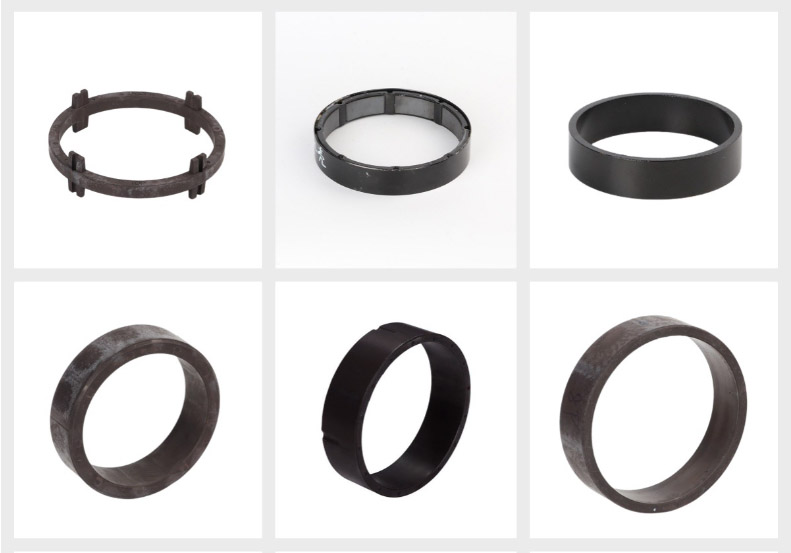The stator in a motor is the stationary part, which usually contains winding coils or permanent magnets responsible for generating the magnetic field, the working principle of motor stator magnets is based on electromagnetic induction and magnetic field interaction.
Types of stator magnets;
The main types are electromagnetic stators and permanent magnet stators. Electromagnetic stators usually consist of a coil winding which, when energized, produces a magnetic field. Depending on the shape and winding of the coil, the magnetic field generated creates a series of poles inside the stator, distributed around the circumference of the stator. A permanent magnet stator consists of a fixed permanent magnet (e.g., a neodymium-iron-boron magnet), which permanently generates a magnetic field and does not require current excitation. It has the advantage of simple structure and high efficiency and is commonly used in brushless DC motors.
The picture below shows a permanent magnet stator magnet ring with the strong magnetic surface on the inner diameter of the ring.

Regardless of whether the stator is of the electromagnetic or permanent magnet type, the main function of the stator is to drive the rotor to rotate by generating a magnetic field that interacts with the magnetic field in the rotor.
Motor stator magnet working principle
When the stator windings are energized or a permanent magnet on the stator provides magnetic fields, these fields form a fixed north-south pole distribution around the stator. In some motors (e.g., asynchronous motors), the rotating magnetic field of the stator generates an induced current in the rotor through electromagnetic induction. This induced current generates a secondary magnetic field inside the rotor, which interacts with the stator field to rotate the rotor. In the case of a synchronous motor or a brushless DC motor, the magnetic field of the stator is always in synchronous motion (i.e., constant speed) with that of the rotor, and the stator's magnetic field attracts or repels the rotor's magnetic field, which generates a torque that pushes the rotor to rotate.
The arrangement of the stator magnets (or coils) and the distribution of the magnetic field are very important because they determine the output characteristics of the motor. The greater the number of poles in the stator, the shorter the period of the magnetic field produced, which allows for higher speeds or smoother operation.
Above is the introduction about the working principle of motor stator magnet, which is to generate torque through the interaction of stator magnetic field and rotor magnetic field to rotate the rotor. Regarding the material, NdFeB magnets are widely used in high-efficiency motors, and ferrite magnets are suitable for motors that do not require high performance.
Content Related Articles;
Number of motor rotor poles and stator poles
What is the difference between 2 and 4 DC motor stator magnets?
 China Neodymium And Ferrite Magnets Manufacturer & Supplier
China Neodymium And Ferrite Magnets Manufacturer & Supplier 


